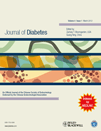Muscular strengthening activity patterns and metabolic health risk among US adults*
The findings and conclusions in this article are those of the authors and do not necessarily represent the official position of the Centers for Disease Control and Prevention.
Abstract
Background: Many studies have examined the relationship between physical activity and metabolic disorders. However, few have focused on specific associations between these disorders and muscular strengthening activity (MSA) patterns. The aim of the present study was to examine the association(s) for each metabolic syndrome criterion and MSA patterns.
Methods: The study sample (n = 5618) consisted of adults ≥20 years of age who participated in the 1999–2004 National Health and Nutrition Examination Survey. Cut-off points for metabolic syndrome criteria were derived from the American Heart Association/National Heart, Lung, and Blood Institute definition. The aggregate of data on weight lifting, push-ups, and sit-ups was used to establish patterns of MSA. Participants reporting ≥2 days/week MSA were coded as meeting current US MSA guidelines.
Results: Following adjustments, participants reporting ≥2 days/week MSA were found to be 28% (OR 0.72; 95% CI 0.62, 0.83) less likely to have dyslipidemia, 29% (OR 0.71; 95% CI 0.54, 0.93) less likely to have impaired fasting glucose, 19% (OR 0.81; 95% CI 0.65, 0.99) less likely to have prehypertension, and 43% (OR 0.57; 95% CI 0.46, 0.72) less likely to have augmented waist circumference compared with those reporting engaging in no MSA. No association was found for hypertension and MSA.
Conclusion: Engaging in ≥2 days/week MSA as part of an overall physical activity regimen may be prudent in preserving metabolic health. These findings strengthen the relationship between MSA and metabolic health; thus, clinicians should include MSA when discussing lifestyle approaches to better health.




